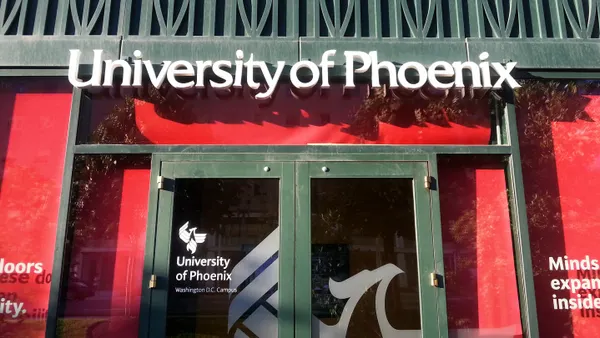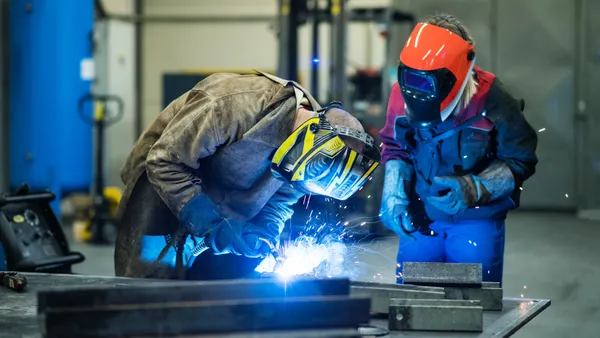A lot has changed in the HR, learning and talent development arena since I dedicated my professional career to this space 15-plus years ago. No doubt you’re familiar with and experiencing the shifts in the talent pool, the complex demands of today’s modern workforce and the ever-increasing speed of business changes today.
The impact those demands have had on recruiting, retention, learning, development, talent strategy, not to mention employee productivity and performance has left many HR professionals wondering… what exactly is HR’s value proposition and function?
HR traditionally manages those routine yet essential processes - recruiting, hiring, onboarding paperwork, legal compliance, harassment training, and workforce planning to name just a few.
This isn’t the rule, of course. HR leaders in many companies have done an excellent job at up-leveling their teams beyond the human capital management administrative processes to a people and culture-first approach that puts the “human” back into human resources.
Still, there is a prevailing problem I see many companies face: the old human capital management processes of the past aren’t flexible enough to adapt to the dramatic shifts in the way we need to effectively manage the workforce, deploy learning initiatives, develop talent, and deploy an overall human capital management strategy.
While there are several of these old processes that sit on my top five “time to adapt” list… one that currently stands out is performance management.
Performance management has evolved
Traditionally, performance management is a point-in-time event that happens annually or bi-annually alongside merit increases.
Over the years, however, multiple studies, statistics, and endless internal pulse surveys have revealed a new trend: a continuous performance management and feedback loop coupled with ongoing learning and professional development programs is crucial to engage and retain today’s modern workforce while giving HR teams a talent pool to meet the ever-changing needs of the business.
Learning & development teams are the linchpin
Having served in many different roles across a variety of companies - restaurant, hospitality, manufacturing, and a few more in between - I’ve witnessed the numerous ways HR and Learning & Talent Development teams engage with each other while serving their prospective divisions, departments, and employees.
What I know for sure is that the learning and development function can act as the linchpin to adapt the old performance management process to the new, continuous performance management cycles. L&D has a holistic view of the needs, gaps, and effective programs based on divisions, jobs, roles, etc...
With the right learning management or talent development platform, they can see the connection between goals, skills, competencies, and behaviors and how those can be effectively deployed continuously alongside the performance management cycles. Their function sees the employee experience during the time it matters most.
It’s time to integrate learning and performance management
“In an age where continuous learning is essential to drive new skills and behaviors, fewer than half of companies effectively link learning to performance.” This observation from The Brandon Hall Group hit home for me because it’s true - but it doesn’t have to be.
What then keeps HR teams from transitioning from one process to another? It’s a great question I challenge learning & development and HR teams with all the time.
What I’ve found is that (1) L&D leaders see the gap, (2) HR teams are constrained with competing priorities and an increased need for their function to address their existing functions (payroll, benefits, rewards, etc…) with the more strategic, higher-priority areas.
Starting your journey to shift toward a more agile, collaborative, and continuous performance management process requires these two teams to come together and recognize this transition as an important priority for both teams’ success.
By implementing a continuous cycle of performance and goals management within your organization, HR and L&D teams can:
- Measure the impact of competency and skills within your organization
- Support learning effectiveness and impact measurement
- Provides line of sight into skill, knowledge and competency gaps for employee and employer
- Unlock the maximum potential by aligning resources and focused training
- Establishes a direct link between employee performance review feedback and learning content to help close gaps
- Proactively plan for the future with a comprehensive view of your organization that lets you find the candidates who are most qualified for the job
There are many ways to adapt your performance management process to meet your organizations changing needs and your employees’ demands. The important thing to walk away with is that it’s an opportunity to bridge the divide between the HR and learning functions to deliver a more personalized, continuous, and effective performance management review cycle.
About Matthew Brown
Matthew Brown is the VP of Learning and Brand Success at Schoox. Matthew’s has 15+ years in IT, HR, Learning & Development, and Talent Management, across multiple industries, with a majority of that time being focused on the hospitality and restaurant industry. Matthew brings his unique blend of technical skills to the world of HR and Training, allowing for an innovative approach to the integration of people, processes, and tools. Matthew has led numerous training initiatives, stood up complex HR and IT Enterprise SaaS Solutions and led countless program rollouts. His passion for Learning & Development combined with a unique blend of technical and business expertise allow him to bring a fresh take on the business of People Practices. In his spare time, Matthew enjoys volunteering at several community non-profit organizations and spending time with his family and pets.
About Schoox
Schoox is the only modern, cloud-based learning and talent development platform designed to unlock employee potential and accelerate business results for even the most complex company structures. Founded in 2012, the company’s six core solutions solve a combination of human capital management challenges by combining Learning Engagement, Content Curation, Social Collaboration, Performance Management & Succession, Career Development, and Business Impact into one unified platform. Today, SchooX empowers excellence in learning and talent development for 8.5 million users across 120 countries in companies like Subway, Kia, Phillips66, Red Lobster, Celebrity Cruises, First Watch, Hopdoddy, Flix Brewhouse, and more. To learn more, visit https://www.schoox.com/.









